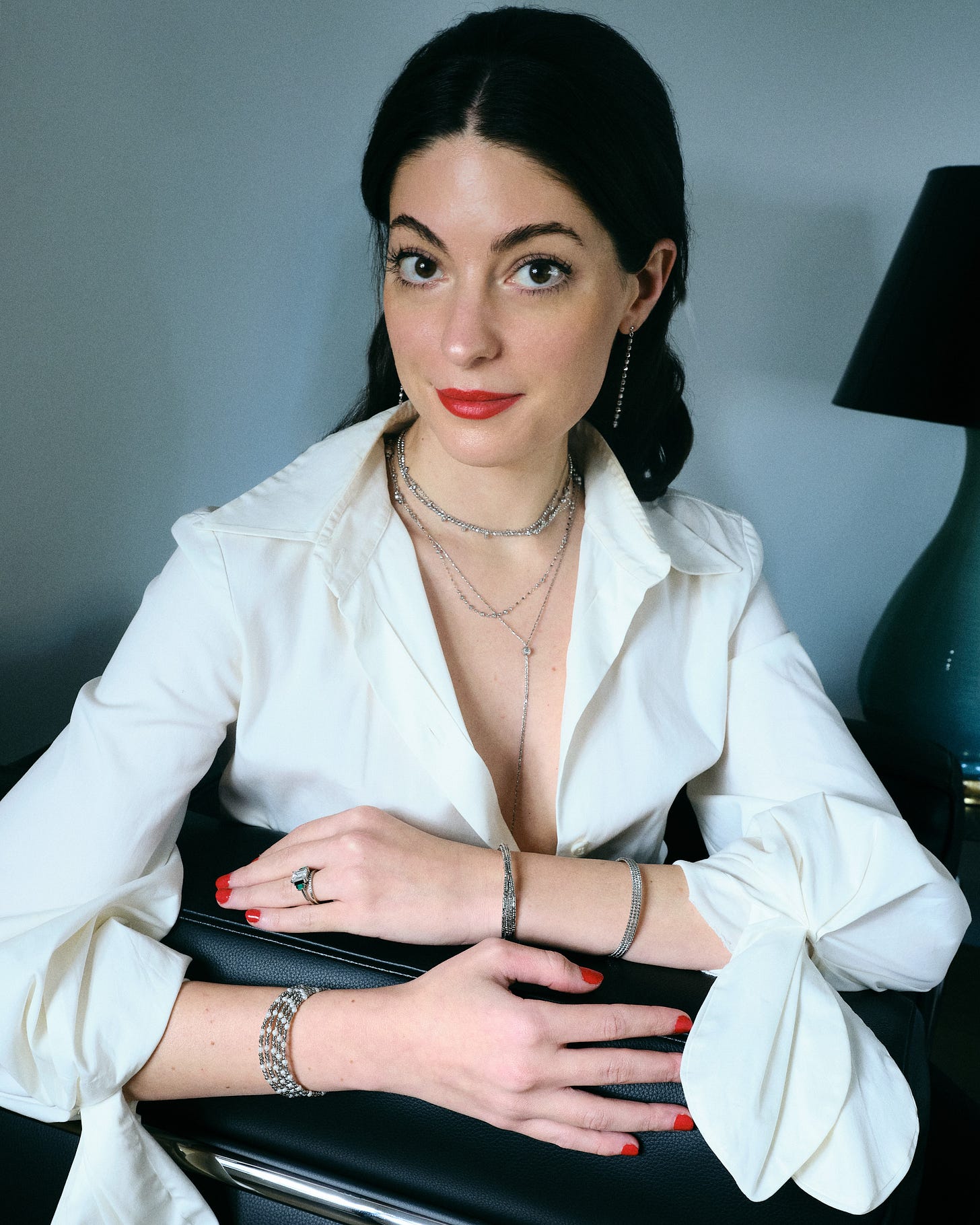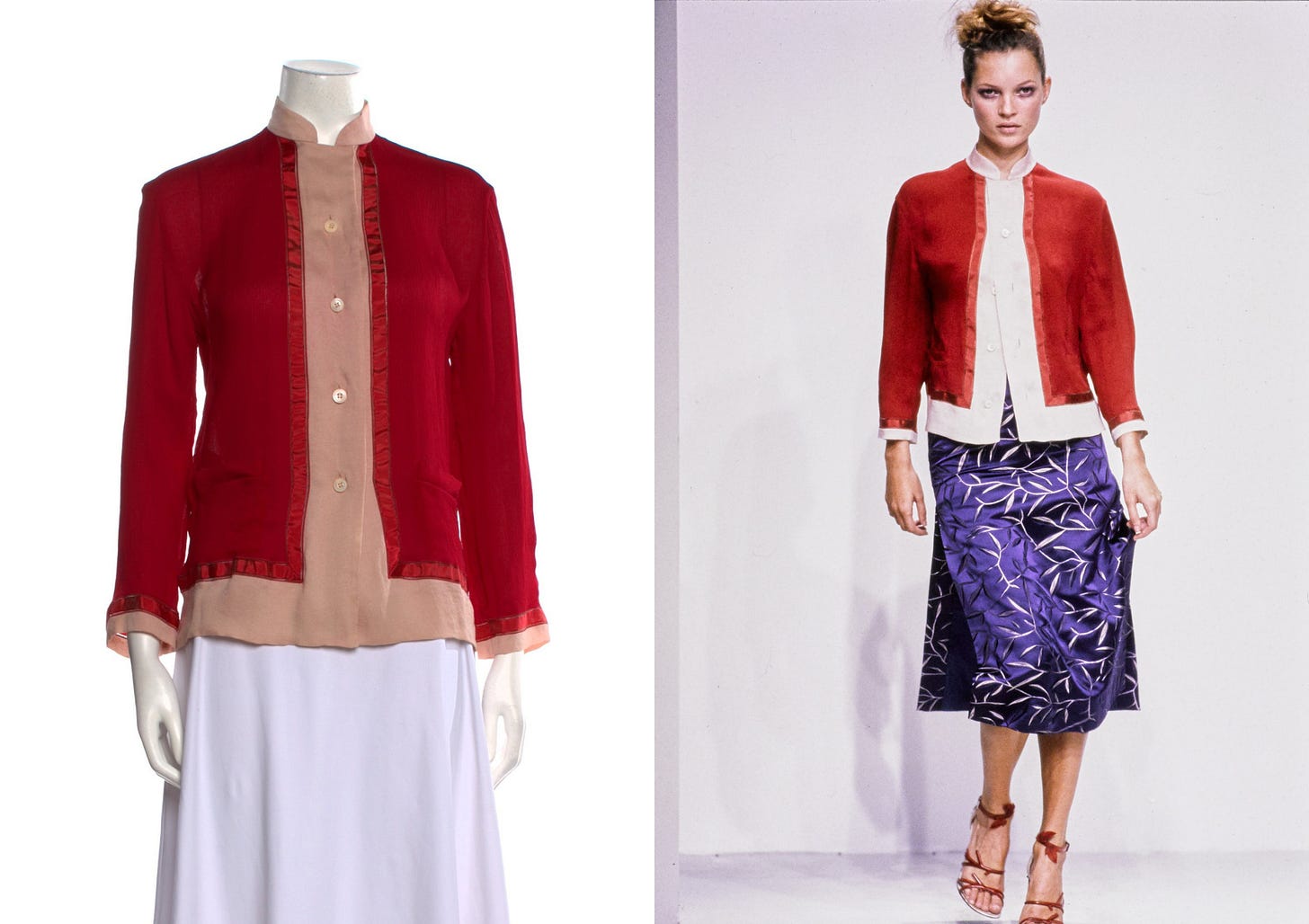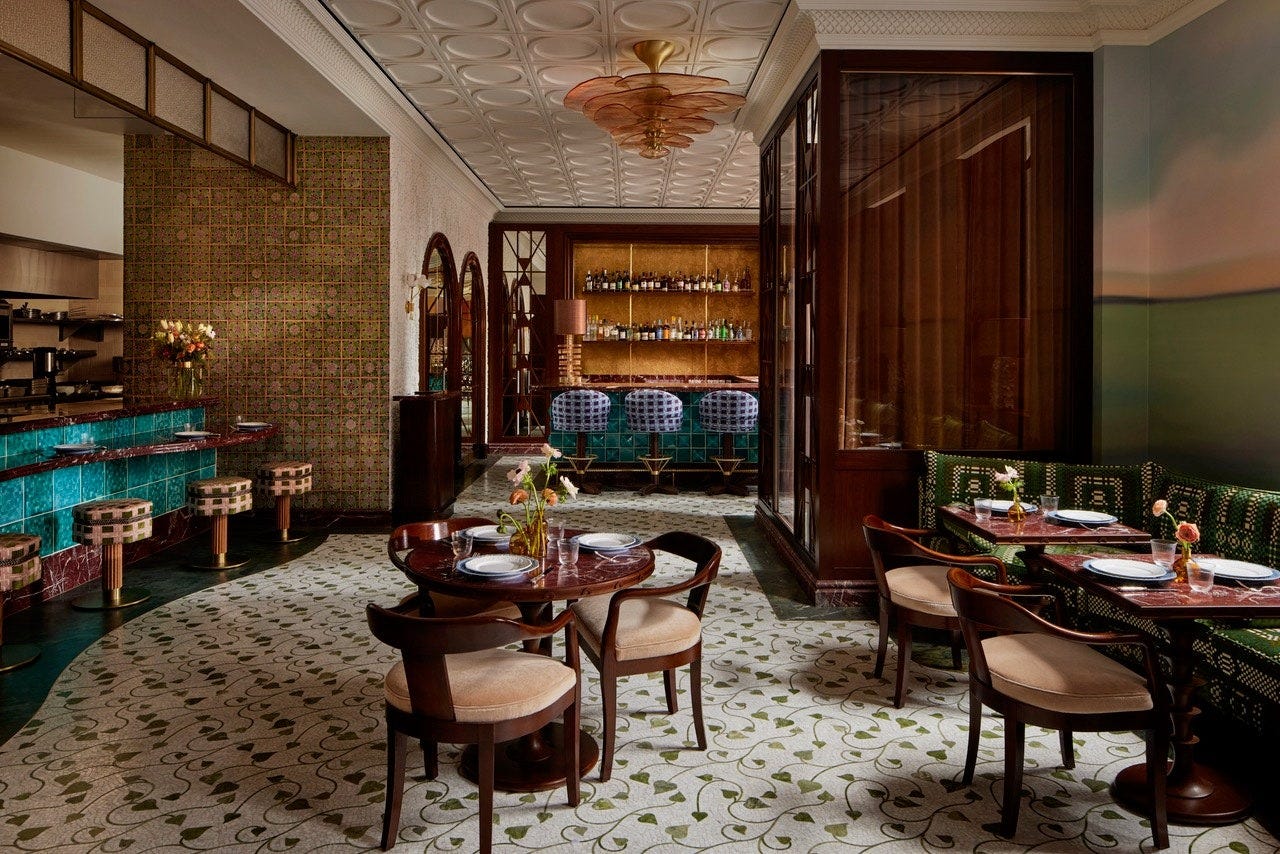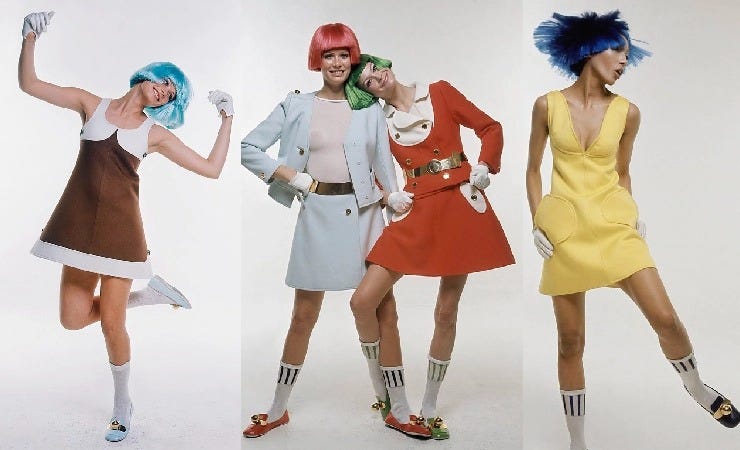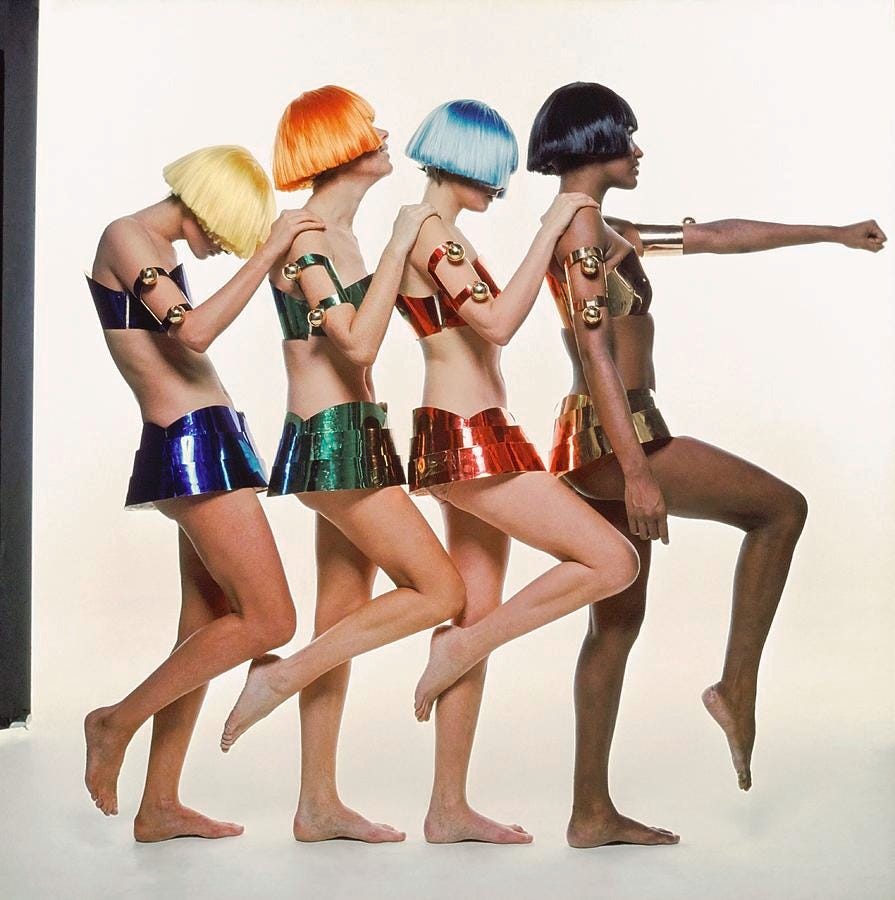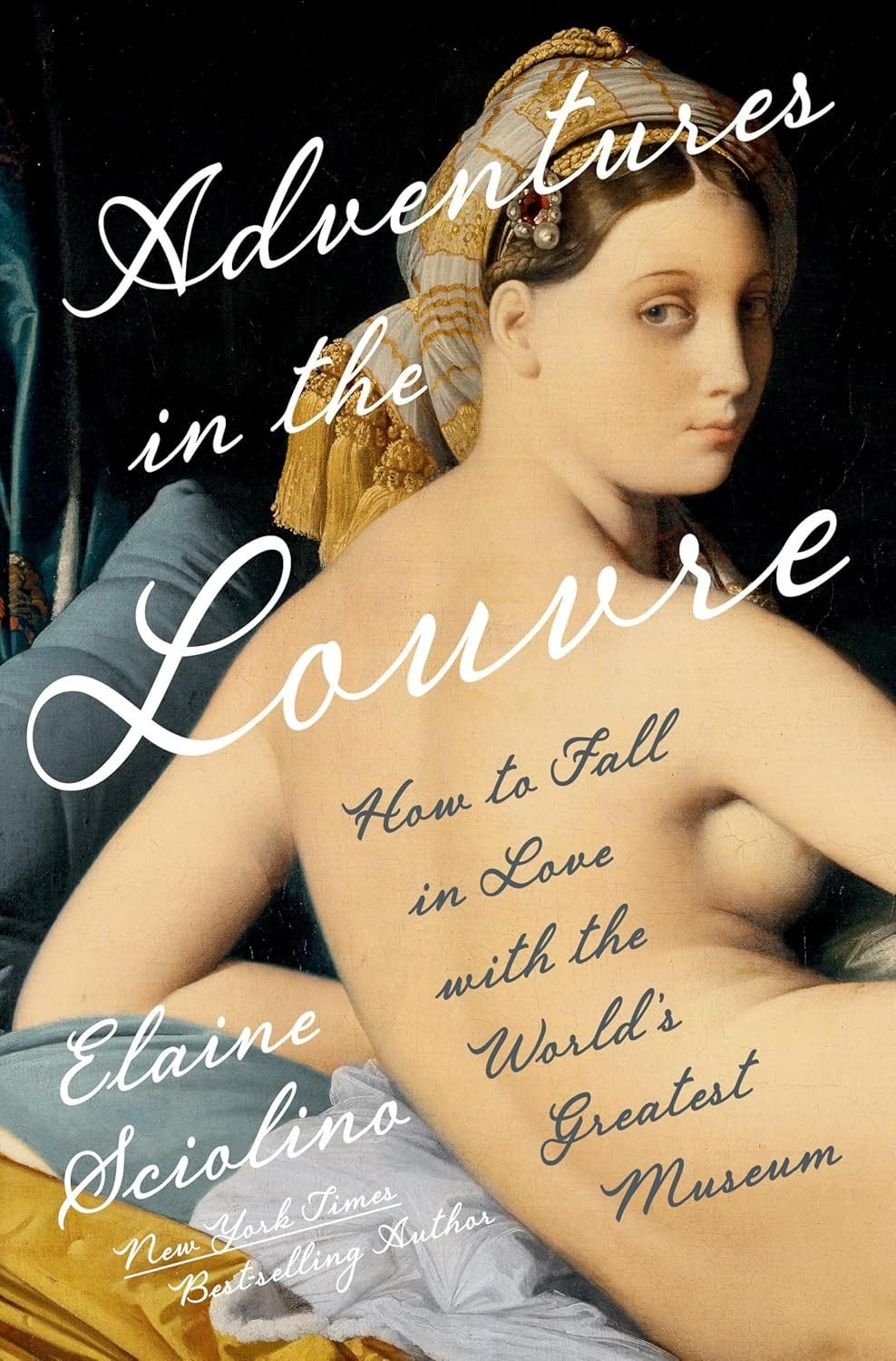The Only Space Fashion Worth Looking At, Per Lilah
Plus, more vintage shopping and culture recommendations for the week.
This week’s recommendations: Blue Origin launches into orbit—and so does my renewed obsession with Space Age fashion. Plus, two vintage gems that prove Tom Ford’s Saint Laurent era deserves just as much love as his Gucci reign. A new bistro turning Wall Street into a destination. And a new book on the Louvre that’s as delightful as a trip to the museum itself.
Blue Origin Took Off—So Did My (Renewed) Obsession With Space Age Fashion
With this week’s intergalactic pop culture moment—an all-female Blue Origin flight styled in custom Monse jumpsuits—I found myself returning to one of fashion’s most delightfully futuristic chapters: the Space Age. The era’s reigning visionaries? André Courrèges (this week’s You Really Should Know This) and Pierre Cardin, whose sleek, sculptural designs imagined life not just beyond the runway, but beyond the stratosphere. (Paco Rabanne was very much part of this constellation, but for today, I’m focusing on the two great French futurists.)
While their runway visions were often otherworldly—modular mini dresses, moon boots, and visored headwear—I’m always struck by how many of these pieces still feel relevant. I've sourced a few archival finds that wouldn’t look remotely out of place in 2025, including wearable minis and sharply cut separates. But I’ve also unearthed two spacey treasures that belong more in a collector’s cabinet than a closet:
First, a pair of Courrèges’s rare and wonderfully surreal “Eskimo” sunglasses—1960s eye-shields made of white molded plastic, designed to wrap around the face like a futuristic blinker, more art object than accessory. And second, a Pierre Cardin vinyl cap from his 1960s Space Age collection: crisp white with red detailing, lined in scarlet felt, complete with a non-adjustable chin strap. It’s mod, minimalist, and Martian in the best way.
Even when they weren’t designing for Earth, these two knew how to make a statement.
Courrèges’ “Eskimo” sunglasses look less like eyewear and more like something issued pre-liftoff—molded white plastic with a minimalist slit for vision, curving across the face like a space-age blinker. Designed in 1964, they’re the eyewear equivalent of a lunar landing: sleek, sculptural, and entirely unconcerned with practicality. A favorite of museum collections (they live at both The Met and the Musée des Arts Décoratifs), they capture the Courrèges ethos perfectly—utopian, futuristic, and unmistakably chic.
The Ford Era Wasn’t Just Gucci
Too often, all the attention goes to Tom Ford for Gucci—and fair enough: the velvet suits! The cutouts! The G-strings! But what’s often forgotten is that for much of his reign at Gucci, Ford was also quietly helming Yves Saint Laurent Rive Gauche, a role he took on after Gucci Group acquired the house in 1999. He brought the same cinematic mastery to Saint Laurent—but with fewer nipple slips and more polish. Think of Tom Ford for Saint Laurent as the older, chicer sister: just as glamorous, but with a slightly more French sense of control.
This week, I’ve found two pieces worth revisiting. The first, from Fall 2004—Ford’s final collection before he left both houses to launch his own label in 2005—is a mink-trimmed wrap top in a pearly pink hue, with exquisite quilting detailing around the shoulders. It’s soft-spoken glamour, the kind that whispers rather than shouts. The second is from Fall 2002: a black velvet top composed of narrow strips, subtly referencing the slashed fashion trend of the 16th century, when garments were cut open to reveal contrasting fabrics beneath. Ford translated that historical flourish into something sleek and sensual—Renaissance, but make it runway.
Together, they’re a reminder that Ford’s legacy didn’t end with Gucci’s runways—it was unfolding, quietly and confidently, at Saint Laurent too.
More Vintage Things—No Context Needed



When McQueen Lit Up the Runway (Literally)
Alexander McQueen’s Fall 1998 collection, Joan, is one of his most unforgettable—theatrical, haunting, and fiercely constructed. I’ve managed to track down Look #49 from the runway: a layered, almost ecclesiastical coat with long black lace sleeves peeking from beneath a sculptural smock-coat with a high mock neckline and slit sides. On the runway, the model punctuated the drama by lifting her thigh-high oxford boots mid-walk through those slits, giving the moment exactly the reverence—and irreverence—it deserved. I’ve pulled the exact clip from the nearly 30 minutes-long show, because when fashion history is this rich, it deserves a replay.
And what a show it was: part exorcism, part coronation. Theatrics abounded—flaming rings, models with bleached brows and red contact lenses, chainmail, portraits of slain Romanovs, and enough symbolism to make a medievalist weep. The finale? A model standing in for Joan herself, engulfed in a ring of fire. As always, McQueen didn’t just design clothes—he conjured myth.

Printemps Has Arrived—and It Brought Its Own Bistro
Let’s retire the idea that restaurants inside department stores can’t be destinations. Maison Passerelle, inside the just-debuted Printemps at One Wall Street, is proof that dinner and shopping can coexist—stylishly. Designed by architect Lina Ghotmeh, the space mixes limestone floors, burnt orange banquettes, and a celestial mural that evokes “sunsets from around the world.”
As the anchor dining experience of Printemps’s first-ever U.S. store, Maison Passerelle arrives with no shortage of fanfare. (The French president was at the ribbon cutting. Enough said.) It’s open for dinner Tuesday through Saturday—but you might just stay for the interiors.
Courrèges: The Engineer Who Designed the Future
Before the moon landing, there was Courrèges. Trained as an engineer and seasoned under Balenciaga, André Courrèges launched his own maison in 1961—and three years later, he changed fashion. His 1964 “Space Age” collection shocked Paris with its white vinyl boots, silver detailing, and mini hemlines that felt closer to aeronautics than haute couture. He made fashion move—fast, free, and stripped of all unnecessary decoration.
Courrèges wasn’t interested in glamour as it had been sold. He banished feathers, necklaces, and stiletto heels in favor of what he called la seconde peau: a second skin of stretch wool, crisp poplin, and clean geometry. Violette Leduc, writing in Vogue in 1965, described his designs as “cathedrals of simplicity,” so perfectly constructed they became “untouchable creations.” To her, a Courrèges model was “a creature dressed so that she can breathe, charged with the dynamism of reality.”
He championed trousers for women, elevated the flat boot, and made white—not black—the color of power. And though his influence cooled in later decades, his impact never disappeared. Modern designers—from Nicolas Ghesquière to the current Courrèges creative director, Nicolas Di Felice—continue to reference his fearless futurism.
Courrèges didn’t just design for the moment. He dressed women for liftoff.
A New Book Opens the Louvre’s Secret Doors
If you’ve ever wandered the Louvre and thought, I wish someone would just explain this place to me—with charm, context, and maybe a little gossip, then Elaine Sciolino’s Adventures in the Louvre is the book to pick up. A longtime Paris correspondent for The New York Times, Sciolino brings the world’s most-visited museum down to human scale. She writes not about crowds or queues, but about the people who keep the Louvre breathing—curators, firefighters, even the artisans who restore the floors.
As she told Vogue, “I don’t write for art historians. I write for the person who might be intimidated by the museum, or who went once and said, ‘Never again.’” That may be true, but the book still manages to feel like a salon conversation—equal parts history, travelogue, and delightfully offbeat character study.




